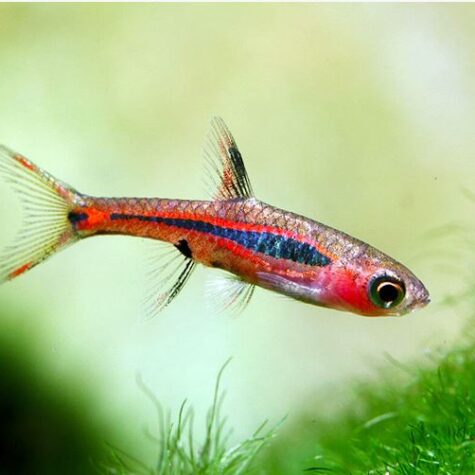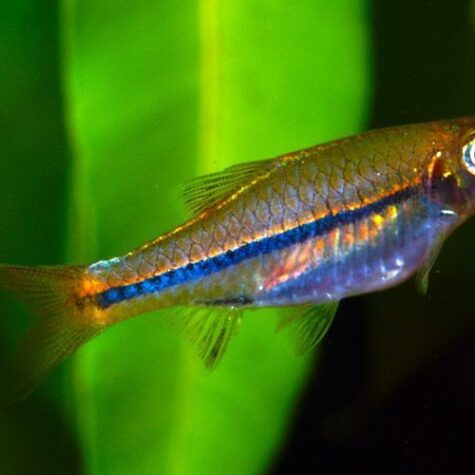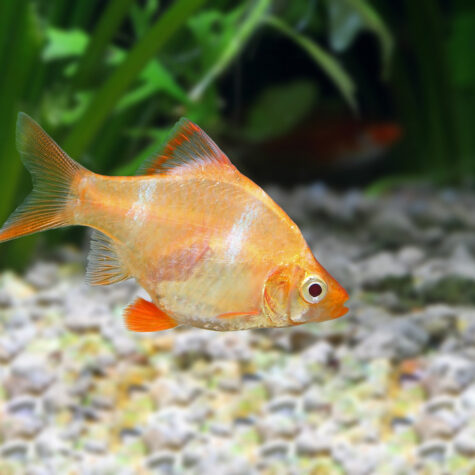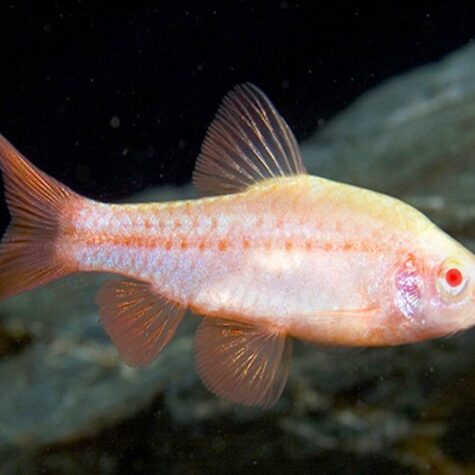$9.99 Original price was: $9.99.$6.99Current price is: $6.99.
*NOTE: AS A FISH FARM, WE DO NOT OFFER GENDER SPECIFIC SEXING ON FISH STOCK. REQUEST FOR MALES OR FEMALES CAN ONLY BE ACCOMMODATED IF THE ITEM SPECIFIES GENDER IN THE DESCRIPTION SUCH AS: MALE BETTA, FEMALE GUPPY, ETC SORRY FOR ANY INCONVENIENCE.
Ok, the name gives a false impression that this fish is related to members of the genera Rasbora and Microrasbora, however, studies have shown this fish to be more closely-affiliated with Puntius and other barbs! The genus is currently monotypic and likely to remain this way. The gorgeous Rummynose Rasbora is native to the Lake Inle basin in Shan state, Myanmar. Aquatic plants grow densely in this area. .The Rummynose Rasboras will grow to a max length of about 1″or 2.5 cm and is one of the smallest members of the Cyprinidae family, and one of the smallest known vertebrates. Perfect for Nano aquariums!
The Rummynose Rasbora is best kept in a densely planted tank! Floating plants like Wisteria, Frogbit to blovk the light entering the tank also seems to be appreciated and adds a more natural feel. Filtration does not need to be particularly strong as these fish will appreciate a slower water. Temperature in Lake Inle have been recorded to vary between 68 – 75F so mimic this in your tank.
This species will tolerate slightly acidic conditions but a value of 7.0 – 8.0 is preferable! Best kept in slightly harder water of 12 – 20H.
Diet: Likely to feed on algae and other zooplankton in nature. This fish will accept dried foods but should not be fed these exclusively. This is a very peaceful fish especially towards other species. It will do best when maintained with active, same sized tankmates that enjoy comparable water conditions. Although this fish is gregarious by nature it is a shoaling rather than schooling species which develops a distinct pecking order initially. Males will tend to be engaged in a continual battle for dominance, especially when maintained in small numbers or in the presence of few females. The best way to minimize this behavior is to purchase more females than males; a ratio of 4:1 or more is ideal or keep in larger numbers.
Sexing: Males are much the more colorful possessing red tips to the snout and caudal fin and a blue sheen on the flanks which is visible only when the fish is lit in a particular way. Females are much more plain with a uniformly olive/pale brownish coloration and appear noticeably rounder in the belly when in spawning condition. This species naturally deposits eggs among aquatic vegetation or filamentous algae. Apparently the most favorable results are obtained when a group of adults is maintained together as a group and the substrate checked daily for eggs since the adults tend to eat their babies.




